The Skaergaard contact with surrounding rocks was seen directly by us in two areas: Mellemø Island and southeastern Kraemer Island. Elsewhere the contact could be seen from a distance, and we walked over the covered contact on Uttental Plateau. On Ivnarmiut Island the contact could be located to within several meters under water. Contact zone gabbros are generally fine-grained along the contact, and coarsen rapidly inward.
Mellemø Island

Contact between partially melted Archean gneiss and the western margin of the Skaergaard pluton. The black spots are lichen, but some angular refractory gneiss autoliths and darker Skaergaard gabbro xenoliths are visible.
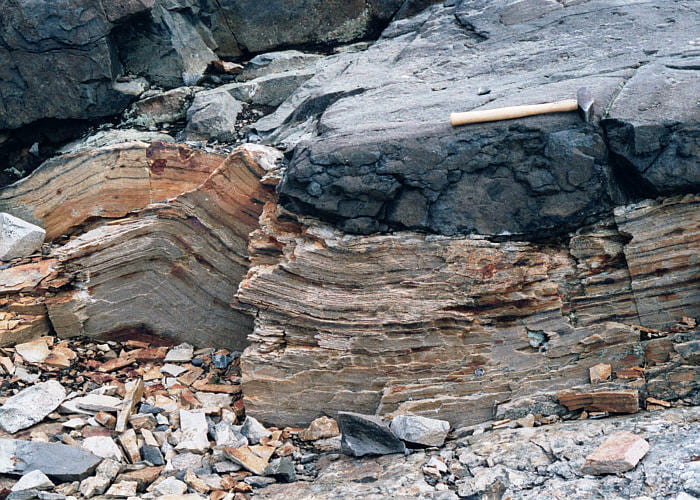
Cretaceous sediments (layered rock), contact metamorphosed against the Skaergaard gabbro (dark rock above. Below the ~0.8 m thick sediment layer is Archean gneiss (lower middle and right) on which the sediments unconformably rest.

Dike of partially melted Archean gneiss crosscutting Skaergaard gabbro. Material like this may have been the source of the transgressive granophyre dikes (though much later, of course).
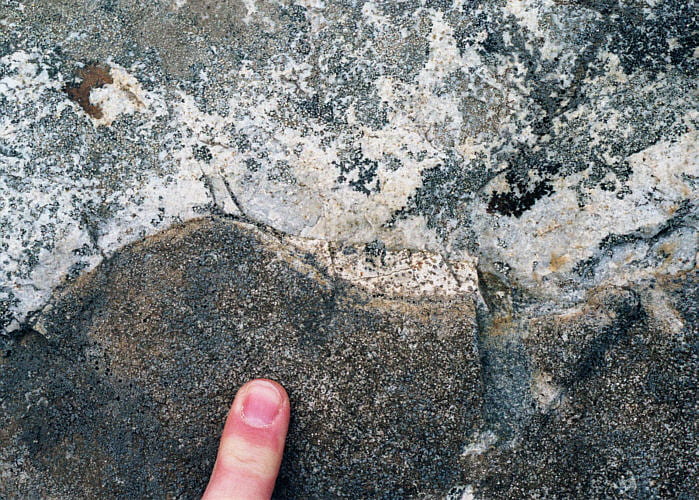
Another photo of the contact showing dark gabbro below, partially melted Archean gneiss above (with lichens), and a small sliver of spinel-bearing Cretaceous sediment unconformably overlying the Archean gneisses.
Kraemer Island

Contact between Skaergaard and the adjacent Archean gneiss, ~10 m above the shore. Gabbro is quite fine-grained in this chilled marginal zone. 5 m inward from this contact the gabbro has crystals 1 cm across.
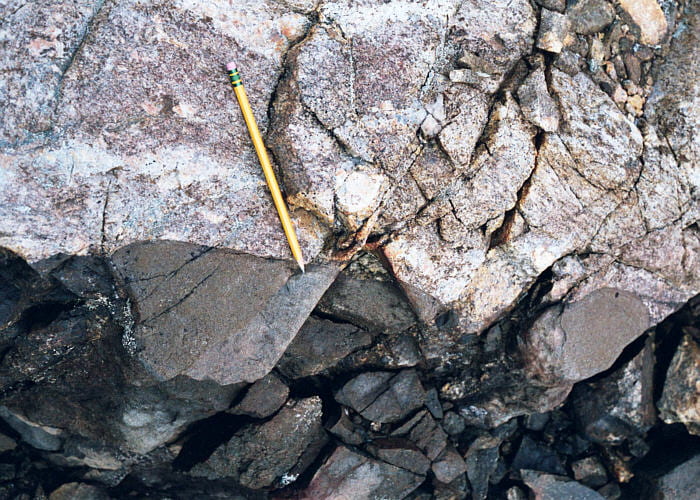
Close-up of the contact between the Skaergaard and the enclosing partially melted Archean gneiss. Notice how fine-grained the gabbro is, and that the contact is smoothly irregular.
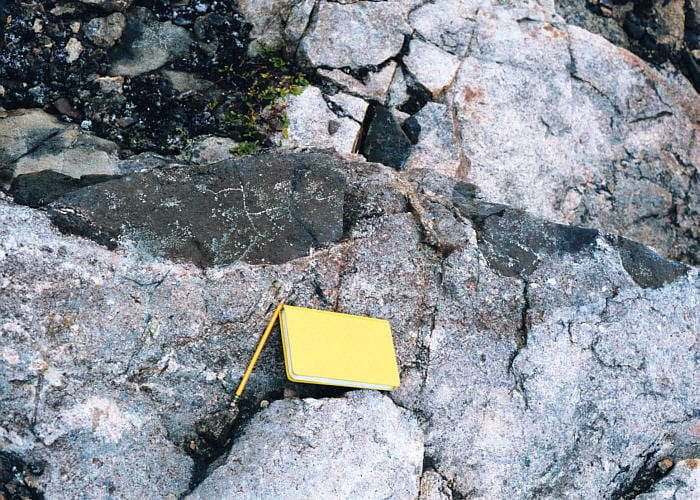
Undulating contact between the Skaergaard gabbro and adjacent partially melted Archean gneiss.
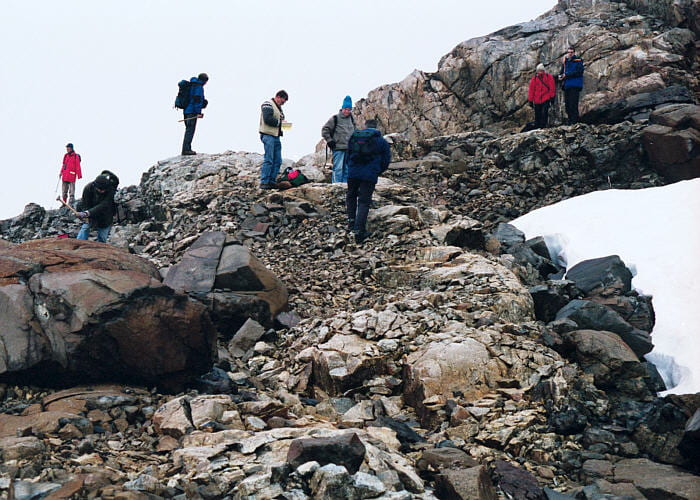
View to the west, ~10 m above the shoreline. The main Skaergaard contact is under the left-to-right line of people, and clearly visible to the right of the man in the blue jacket on the far right. The man walking away in the middle of the photo is walking on a mixture of melted gneiss, gneiss blocks, and gabbro blocks that back-intruded the gabbro which is exposed to either side. The most distant rocks are Archean gneiss.
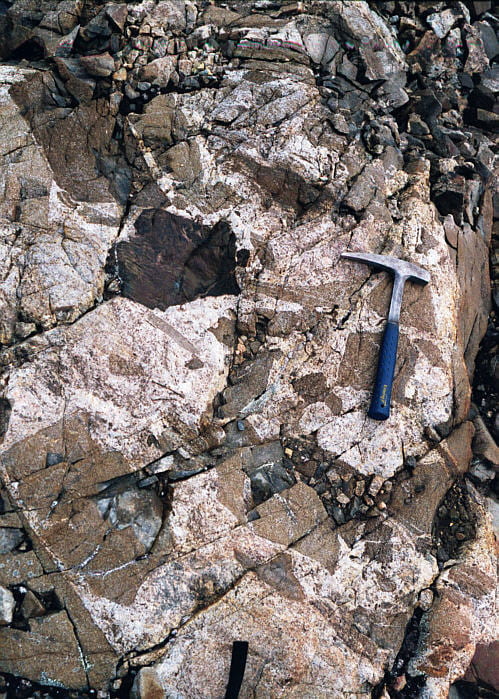
Closer view of the felsic dike, in the photo above, with a granitic matrix enclosing blocks of unmelted gneiss and gabbro.
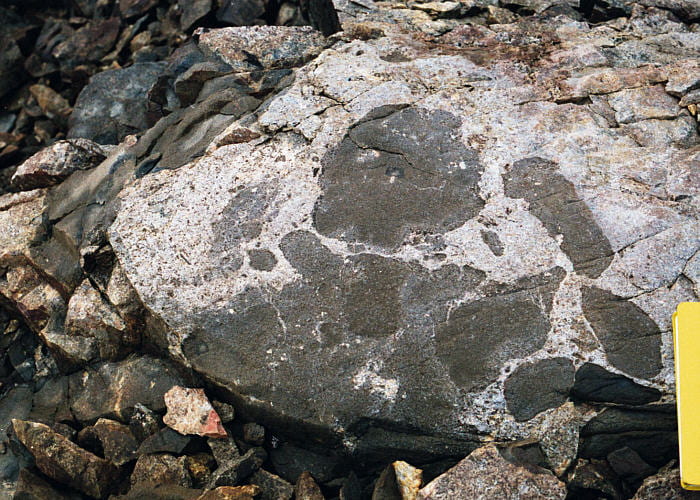
Pillow structures along the contact of the Skaergaard. These pillows, or rounded xenoliths, are encased in mobilized melted gneiss.
